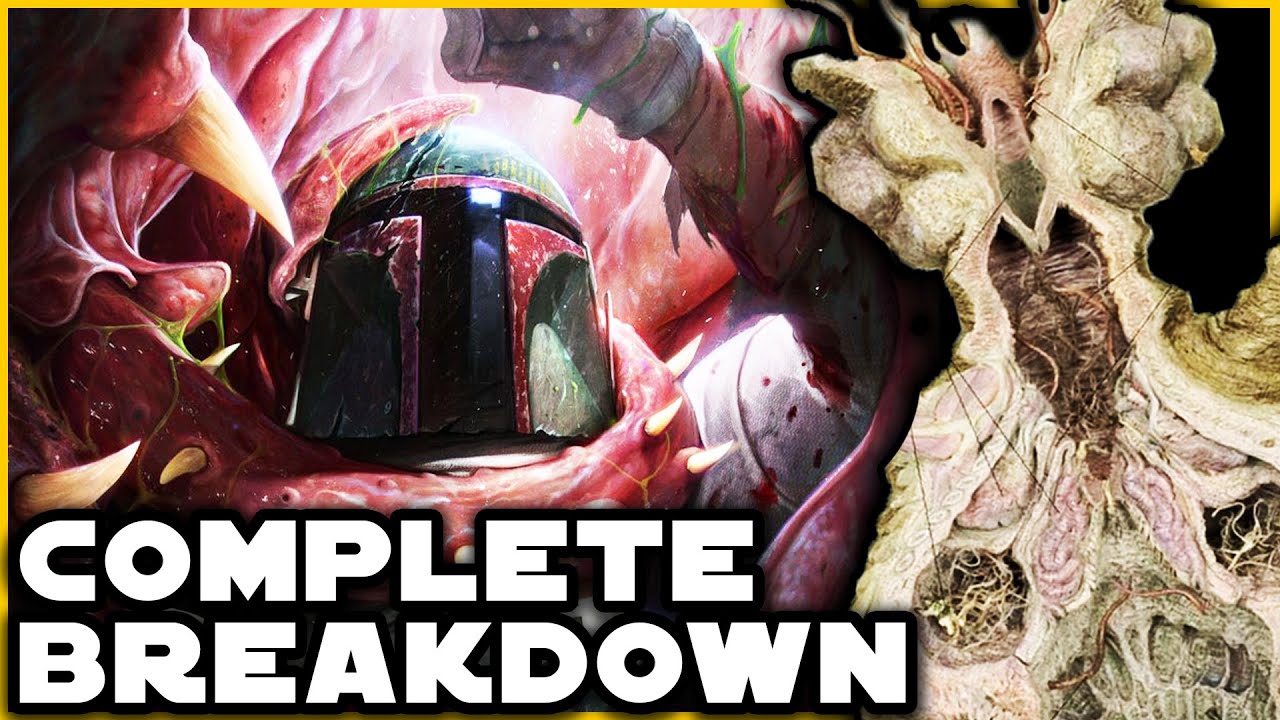Sarlaccs were semi-sentient, plant-like, omnivorous creatures found on several planets across the galaxy. Not much was known about this creature, but it was unique in terms of galactic species. It lived to be tens of thousands of years old, and reproduced by spores. One particular specimen of sarlacc was located in the Great Pit of Carkoon on Tatooine. It tortured the famous bounty hunter Boba Fett, who eventually managed to escape. While Jabba the Hutt claimed it as a pet, it arrived on Tatooine of its own accord. Another sarlacc could be found on Felucia. Near this sarlacc, Shaak Ti was slain by Darth Vader’s secret apprentice, Galen Marek. A third sarlacc was known to dwell in the pit on the planet Aargonar’s moon Aargonar 3. Yet another, less famous sarlacc dwelled on Tatooine right next to some Ancient Ruins. It attempted to devour Darth Tyranus while he was dueling Anakin Skywalker, but the Count used an exertion of the Force to escape and then fled from battle.
The sarlacc was a large, omnivorous invertebrate with long tentacles that rimmed its mouth. They reproduced by spores, known as «sarlacci,» that traveled through space until they found another suitable planet to inhabit. After implanting itself into the ground, the sarlacci grew downward like a plant, forming a pit. The mouth and tentacles were the most visible parts of the sarlacc. The rest of the sarlacc’s massive anatomical features were buried up to one hundred meters deep in the ground. This guaranteed protection of the sarlacc’s vital organs and made it invulnerable to most forms of serious damage. The teeth of the sarlacc surrounded its beak-like tongue and plant-like tentacles in tiers. Its teeth were also slightly slanted inward ensuring its prey would remain trapped. While its lightning-fast tentacles were used to snatch up its prey, such as Eopies, they were not its primary means of capturing a meal. The sarlacc discharged odors and scents that lured herbivores and scavengers close enough for it to use its tentacles. Sarlaccs had a very odd body shape. The sarlacc’s mouth was the only part of the body visible, usually. Most of its body was covered in rigid plates. It had eight appendages beneath the ground used for stability or for reburial if the sarlacc became partially exposed. The body of the sarlacc ended in three roots used for moisture absorption.
Despite their size, the sarlacc did not need to eat very much at a time. They were almost entirely immobile, which means they had to be able to survive for prolonged periods without food. As a result, they also digested their food very slowly. It was even said that sarlaccs could be telepathic and could gain consciousness from the creatures they ate by assimilating their thoughts and memories during digestion.

